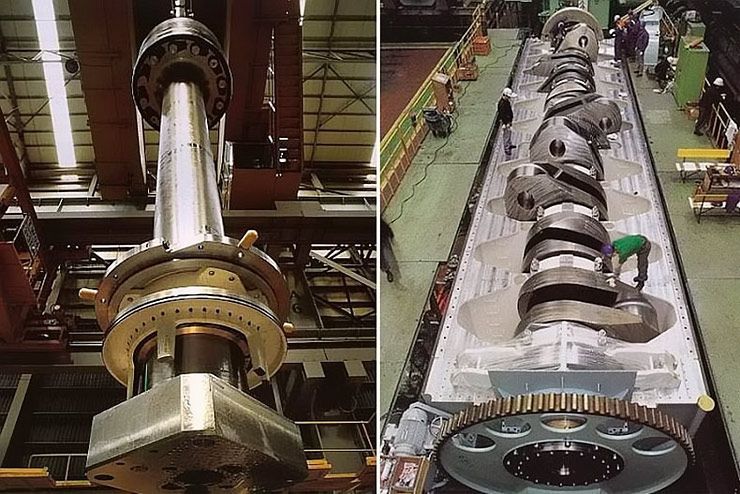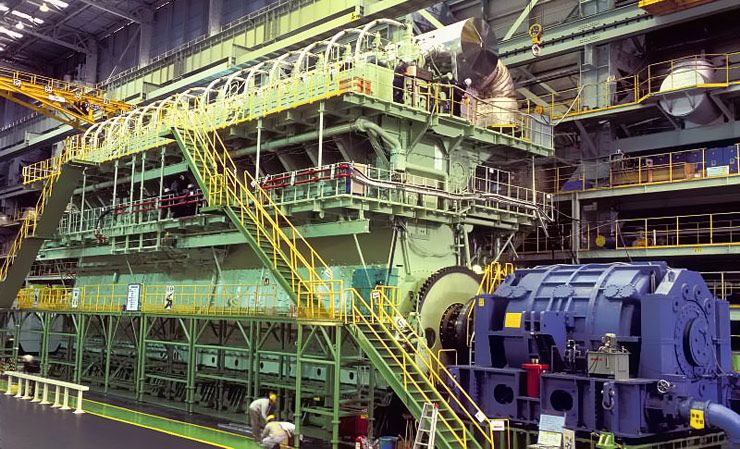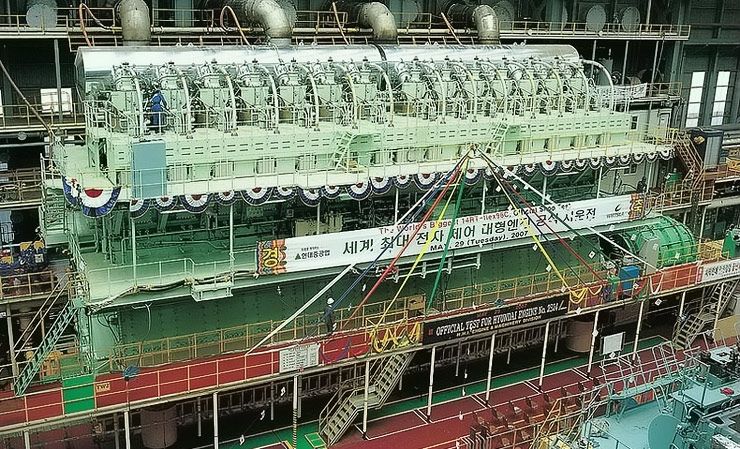Container ships are some of the largest and heaviest vessels that plough on the seas. They measure up to 1,200 feet in length and can move 10,000 to 16,000, 20-foot steel containers in one trip. To push these vessels through the water require immense amount of energy, that are derived from massive diesel engines.
The RT-flex96C – a two-stroke turbocharged diesel engine designed by the Finnish manufacturer Wartsila and is currently the largest and most powerful diesel engine in the world.
At a length of 89 feet and a height of 44 feet, and I would not be far off to state that this engine is as big as an office block! The total engine weight is 2300 tons – the crankshaft alone weighs 300 tons.
What I find confusing is why they haven’t actually built the ship around the engine? How they actually get the 2,300 ton engine out of the factory? Moreover, install an engine of this size into a ship?
Well in actual fact, that is exactly what happens, the ship is indeed built around the engine. In the marine construction trade, all boats and ships including harbor tugs and fishing trawlers have the superstructure of the ship built around the engine. The only exceptions are small modest boats.
Indeed 102 rpm may be slow compared to a normal sized car engine that operates at about 2500 rpm, but with an engine is as big as this, then fast engine revolutions are made obsolete by the fantastic power output.
The ship will be dry docked and the portion of the hull that supports the engine-bed is cut away so that the engine-bed can be lowered and extracted. The new engine is fitted in reverse procedure to the method stated for removal.However, when we are talking about the Wartsila-Sulzer RTA96-C, this super massive engine and its ultra low engine revolutions will invariably last the lifetime of the ship and will never need to be overhauled. If you were to hear one of these engines running flat out, you would believe that it was in reality, just ticking over.















Facebook Comments